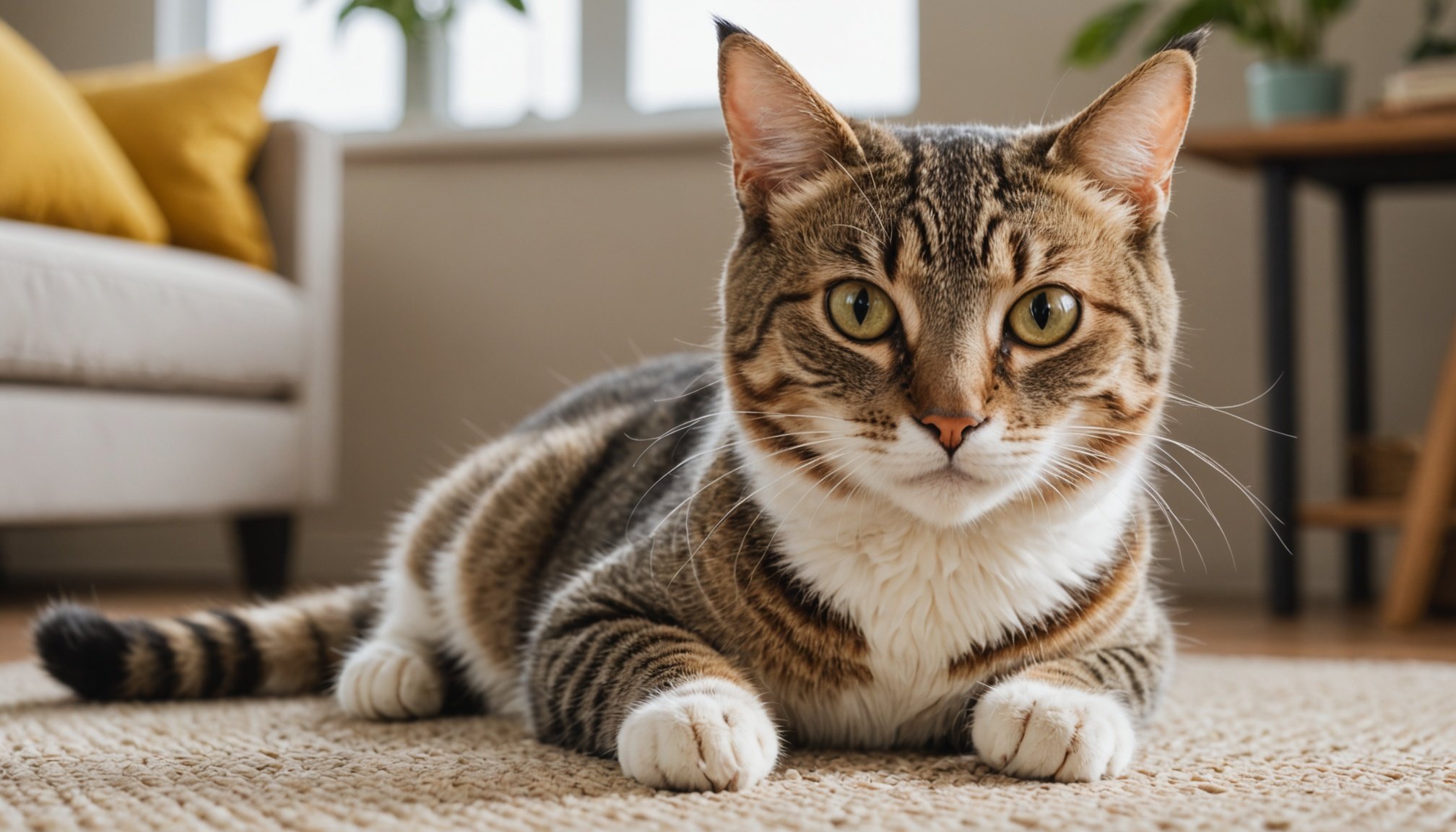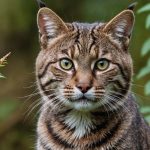Understanding Scent Enrichment
Cats experience the world primarily through scent, making olfactory stimulation crucial to their daily lives. With their sensitive noses, they detect subtle pheromones, which deeply influence their mood, safety, and interaction with their environment. Cat scent enrichment involves deliberately introducing new scents to stimulate their senses, contrasting with visual or auditory enrichment that cater to different needs.
Scent enrichment is a powerful tool for enhancing a cat’s environment. It provokes natural feline behaviour by introducing smells that captivate their attention and curiosity. This differs from physical enrichments like toys or scratching posts, which engage other senses and activities.
En parallèle : Designing a purrfect work environment: engaging your cat while you work from home
Why is olfactory stimulation so important for cats? It can alleviate boredom, reduce stress, and even curtail unwanted behaviours such as excessive grooming or marking. Cats familiarise themselves with a new scent, allowing them to explore safely without feeling overstimulated or anxious.
Incorporating scent enrichment effectively can lead to a happier, healthier pet. Options include using catnip, valerian, or interactive scent diffusers. Through understanding and harnessing scent enrichment, your cat’s daily experience becomes more engaging and rewarding, boosting their mental health and overall well-being.
A découvrir également : Designing entertaining and productive indoor workout routines for your cat
Preparing for the Scent Adventure
Engaging your feline friend in scent enrichment can be an exciting journey, but it’s important to be properly prepared. Begin by gathering the essential materials for cat enrichment. Items like empty shoe boxes, fabric scraps, or scent tubes can be used to introduce new smells. You may also want to consider fabric sacks filled with herbs such as catnip or valerian root.
Before diving into scent activities, prioritise cat safety. Ensure materials are non-toxic and dismantle any small parts that could be ingested. Always supervise your cat during these activities to prevent any mishaps.
Safety precautions should not stop at materials. Observe your cat’s behavior for signs of stress or agitation, as this can signal discomfort or overstimulation.
Assessing your cat’s readiness and interest in scent activities is crucial for a successful experience. Start by presenting a small variety of scents to determine their preferences. Notice how they react: Are they curious, sniffing around enthusiastically? If they seem hesitant or disinterested, try different scents or ease into more complex setups gradually.
Remember, every cat is unique. Tailoring scent activities to match their individual interests will go a long way in keeping them engaged and safe during their scent adventure.
Techniques for Creating Scent Activities
Crafting engaging scent activities for your feline companion offers them an enriching environment to explore. With cat scent activities like DIY scent games, you can curate interactive cat experiences that stimulate their natural instincts.
Simple Scent Games
To kick off simple scent activities, utilise everyday items such as cardboard boxes and paper bags. These can be transformed into treasure chests of hidden treats, captivating your cat’s curiosity. Moreover, consider creating DIY scented toys incorporating organic, cat-safe herbs like catnip or valerian. These not only promote play but also offer therapeutic benefits.
Interactive Scent Trails
Elevate your pet’s sensory adventures by organising a scavenger hunt around your home. Introduce interactive scent trails using cat-safe essential oils like lavender or chamomile, carefully setting paths your cat can follow. This encourages exercise and engages their powerful sense of smell.
Sensory Exploration Stations
Designing sensory exploration stations goes beyond just smell—it’s about creating a full experience. Rotate various scents and textures to keep these spots lively. Items like different fabrics and safe plants can add to these multi-sensory spots. This variety ensures the scent games remain intriguing and enduringly enticing.
Tailoring Activities to Your Cat’s Preferences
Recognising and adapting to individual cat preferences is crucial in creating engaging activities for your feline friends. Observing their interactions with different scents and materials offers valuable insights into their likes and dislikes. For example, cats may show preference by rubbing against or sitting near certain items. Such behavioural cues can guide you in choosing appropriate enrichment activities, ensuring they are both stimulating and enjoyable.
By focusing on adaptive enrichment, you can tailor activities based on each cat’s unique behaviours and personality traits. If a cat frequently gravitates towards objects with certain textures or smells, consider using similar materials to design playtime. This creates a familiar yet exciting environment that encourages interaction.
Additionally, encouraging shy or hesitant cats to participate can be achieved through the use of familiar scents. Incorporating scents they associate with comfort and safety can gradually coax them out of their shells. For instance, items with the scent of a favourite human or a well-loved toy can provide reassurance.
Adapting to each cat’s preferences not only enhances their well-being but also strengthens the bond between you and your pet. By being attentive to their needs, you create a more harmonious and engaging living environment.
Health Considerations in Scent Enrichment
When it comes to scent enrichment for cats, the primary focus should always be on their health and safety. Selecting scents that are non-toxic and safe for feline companions is crucial. Some essential oils and fragrances, though pleasant to humans, can be harmful to cats. Always ensure the ingredients are free from potentially hazardous chemicals.
Consulting with veterinarians is a proactive step in safeguarding your cat’s well-being. They can provide professional advice tailored to your pet’s specific health needs, especially if there are any existing conditions. A veterinary expert can guide you on which scents are safe and suitable, ensuring they won’t exacerbate any underlying health issues.
It’s important to be aware of signs indicating scent-related stress or discomfort in your cat. These signs can include sneezing, excessive grooming, scratching, or a noticeable change in behaviour or appetite. Recognising these symptoms early is essential in preventing distress caused by environmental changes.
Incorporating scent enrichment responsibly involves a comprehensive understanding of your cat’s health. Balancing stimulation with safety fosters a harmonious environment, allowing cats to enjoy the benefits of enriched surroundings without adverse effects. Always prioritise their well-being when introducing new sensory experiences.
Evaluating the Effectiveness of Scent Enrichment
Observing how your feline friend interacts with scent activities is key to assessing enrichment success. Engagement levels can be assessed by tracking your cat’s interest and play behavior. This includes noting how actively your cat explores new scents or shows curiosity during enrichment sessions. Keeping a journal to monitor these behaviors can be a helpful tool to note any changes in your cat’s demeanor or mood over time. It provides a structured way to record insights and adjust strategies for optimal enrichment.
Monitoring Engagement Levels
Observe closely for signs of excitement or prolonged interest as indicators of successful enrichment. If your cat repeatedly seeks out the scent or returns to the source, it reflects engagement. Noting increases in playful behavior or signs of relaxation, such as purring or kneading, can also highlight the benefits of the activity.
Adjusting Activities as Needed
Recognizing when to renew the scent activities is crucial. Introducing new scents or varying the complexity of scent games can keep your pet intrigued. Switching between scent formats, like toys or scratch pads, can also maintain prolonged interest. Fleeting attention or quickly dissipating excitement indicates the need for new scent adventures.
Collecting Feedback from Your Cat
Cats display satisfaction or disinterest through body language and vocalizations. A relaxed posture, repeated scent engagement, or soft meows suggest enjoyment. Conversely, avoidance or retreat denotes disinterest. Understanding these signals aids in enhancing the enrichment benefits tailored to your cat’s preferences.











